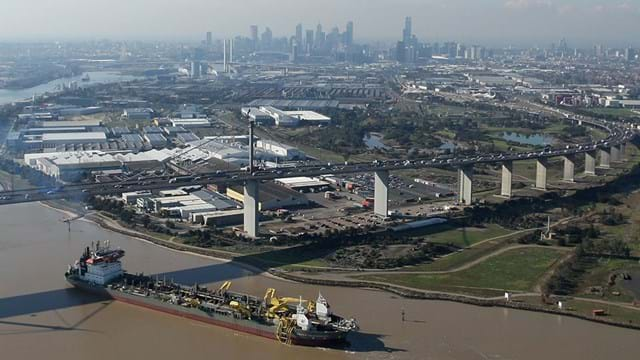The port of Melbourne is vital to the Australian economy. In 2007 the Australian government approved a project aimed at making the port more accessible to container ships with a draft of up to 14 meters.
Brief
Boskalis was contracted to deepen the access channels in Port Phillip Bay. The project involved dredging sand, clay and rock from the bay and removing contaminated silt from the Yarra River, as well as deepening the entrance to the bay and installing rock protection around pipelines and cables.
Challenge
The location of the port required the dredging work to be carried out within strict environmental parameters. In addition, strong currents and a long swell meant it would be impossible to use a stationary cutter suction dredger at the busy entrance to the port.
Solution
- A trailing suction hopper dredger was deployed to pump 1.4 million m³ of contaminated silt through a 750m-long pipeline and a diffuser to an underwater disposal area. This was enclosed by a bund of clay 5 meters high and 40 meters wide, and eventually capped with a layer of clean sand;
- A special frame was developed for the protection of existing, operational pipelines by positioning steel plates over them with great precision and within the stated tolerances;
- A unique ‘ripper’ draghead was developed for use with a trailing suction hopper dredger in order to dredge the entrance to the bay and remove around 460,000 m3 of limestone. This allowed us to combine the maneuverability of a hopper with the strength of a cutter;
- Thanks to laboratory testing using scale models we achieved high suction efficiency and were able to reduce spillage of dredged materials and so minimize the environmental impact;
- The remaining loose material was regularly suctioned off to prevent the strong currents from carrying it to the nearby nature area.



